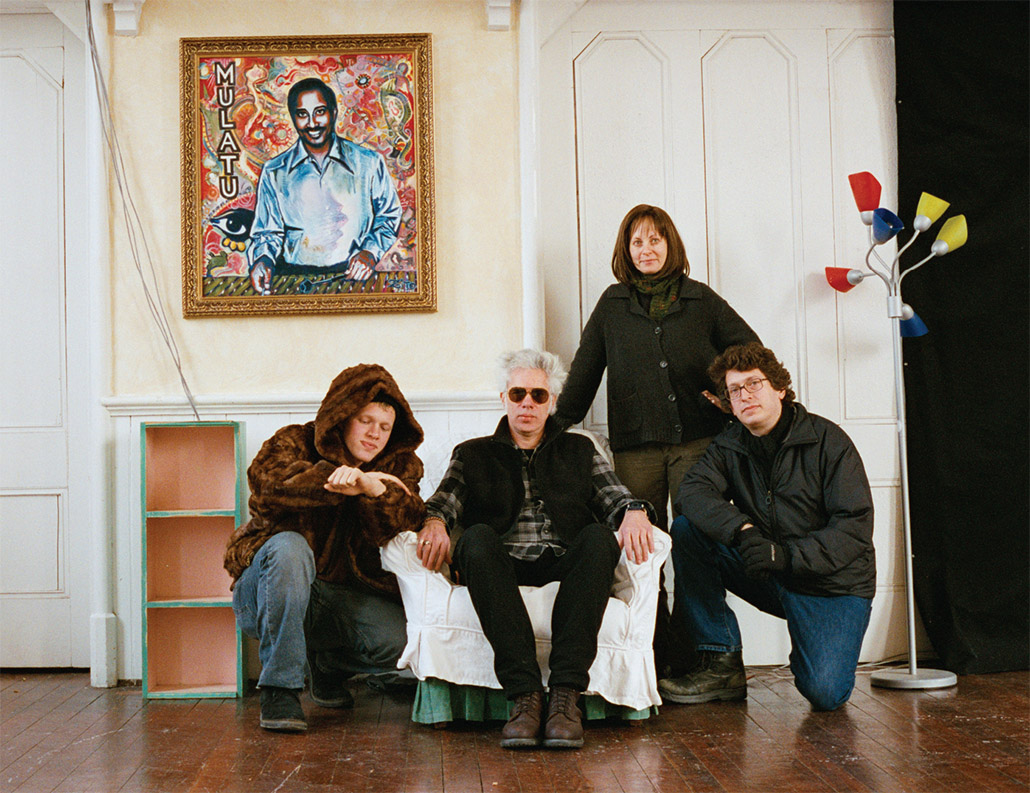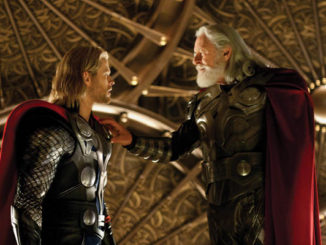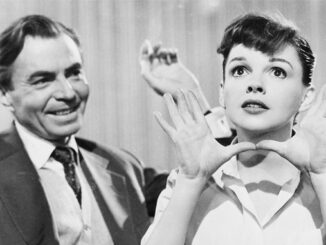
by Rob Feld
One of the joys of working in theatrical professions is the episodic nature one’s life can take and the variety this can yield. As one moves from project to project, each episode brings new voices, stories, personalities and aesthetics into one’s personal and creative life. Editor Jay Rabinowitz, ACE, is one who has had this experience in spades, working with such directors as Paul Schrader, Frank Oz, Barry Levinson and Curtis Hanson, as well as independent filmmaking icons Darren Aronofsky and Jim Jarmusch––the latter two regularly and, most recently, in tandem.
Rabinowitz graduated from New York University’s (NYU) undergraduate Cinema Studies program in 1984, where he found his talent for and love of editing. He was in the process of getting his resume around when he got a call from a film in pre-production that needed an intern. Though the caller wouldn’t name the film, Rabinowitz learned that the director and editor had both gone to NYU. The next day he received a call from editor Melody London––the film was Down by Law; the director was Jim Jarmusch.
Crediting this stroke of luck with much of his subsequent good fortune, Rabinowitz has been with Jarmusch ever since. The Down by Law, experience hooked him, the editor says, and he learned to sync dailies with director of photography Robby Müller’s glorious footage. In 1991, as Jarmusch and London began going their separate ways, Jarmusch asked Rabinowitz to cut the director’s Tom Waits music video (“It’s Alright with Me”) for the Cole Porter tribute/AIDS benefit project Red Hot and Blue, which led to them doing Night on Earth (1991) together. Rabinowitz had been assisting and apprenticing for six years, and Night on Earth was his big break. From there, he did the Homicide cable series for Barry Levinson and Tom Fontana. Then doors began to open.

Although he has cut more mainstream films, such as 8 Mile and The Stepford Wives, Rabinowitz has spent most of his time with the eclectic, low-budget projects. Presently, he is editing Aronofsky’s new film, The Fountain, the post-production of which crossed over into the tail end of editing Jarmusch’s Cannes Film Festival hit, Broken Flowers, currently in release.
“The films overlapped in a way that was not particularly fluid, but it did juxtapose them in my mind in a very intense way,” Rabinowitz explains. “The two men could not be more different, Darren and Jim. But they are similar in that they are single-minded in their focus and concentration on their vision. Jim’s is a very minimal style and Darren’s is a very maximal style. It is a little schizophrenic to jump back and forth between the two.”
Though a radical mind leap, the transfer does have its benefits. “Between them, it is a 180-degree difference in style of acting, shooting and cutting, but for me that’s very exciting and I feel lucky to be able to bounce back and forth between the two,” he says. Switching modes is nothing new for the editor. “In Homicide, Barry Levinson wanted it cut like Godard’s Breathless, but then I’d do a Paul Schrader picture with meticulous coverage,” he continues. “It’s lots of back and forth––like being in a punk rock band and then in a string quartet.”
One won’t see any Aronofsky freneticism in Jarmusch’s deadpan film but some cross-pollination had to have occurred. “This is the most intense juxtaposition I’ve encountered,” Rabinowitz says. “Jim’s whole thing with Broken Flowers was that Bill Murray’s character is a blank slate. We wanted it devoid of emotion and expression, for the most part, so these subtle little things would come through and give us a very nuanced performance. Darren’s film is very dramatic, sometimes melodramatic, the emotions are heightened. It’s really two extremes, but in a way, helpful. By making me hyper-aware, each one informed the other.”
Jay Rabinowitz rarely finds much pre-production conversation with his directors about the form the film should take.
“He’s versatile enough to switch between many different projects,” comments Jarmusch about his editor. “Jay finds the style that the director wants it to be, without trying to sign it with his own style.”
“Jay cuts for Jarmusch and he cut my Requiem for a Dream, which are very opposite ends of editing,” Aronofsky adds. “That he’s able to take on the style of different directors is one of his great traits. I always call him a ‘Method Editor’ because he sort of becomes the directors he works with and absorbs our styles.”
“We cross-reference so many things––musical tastes, tastes in film,” says Jarmusch of his relationship with Rabinowitz. “That’s something very important to me. Jay is a very musical person and editing is a very musical form. The rhythm of the films and my sense of music, combined with his musicality, is just invaluable.”
Working methods have varied for Rabinowitz as well, even from project to project with Jarmusch, as their collaboration has progressed and technologies improved. “Things have changed over time and it depends on the project,” says the editor. “Jim does not take his editor with him on location, which in this day and age is a little unusual. He’s sort of a ‘one thing at a time’ kind of guy, so he’s not ready to think about editing while he’s shooting. He sends the material back to me from the set. It took a little convincing for him to let me start cutting while he’s shooting. During Night on Earth we were still cutting on film, so I would work on the scenes on the flatbed, videotape them so I’d have a record of it and then reconstitute the footage.”
“The Fountain and Broken Flowers overlapped in a way that was not particularly fluid, but it did juxtapose them in my mind in a very intense way,” – Jay Rabinowitz
The introduction of digital systems seems to have had a profound effect on their working process. By the time they were working on Dead Man, Rabinowitz was cutting while Jarmusch was away. “Then, once in a while, I would send him a tape of what I was doing, and he started to realize that the process could be enjoyable,” Rabinowitz recalls. On Broken Flowers, Jarmusch was in the New York area but never came to the cutting room.
The nature of the film also seems to have enabled that experience. “In a way, Broken Flowers was back to an older style for Jim,” Rabinowitz says. “He was so particular about Bill Murray’s performance that he was less interested in my first pass than he had been in Ghost Dog, Dead Man and Night on Earth. He really wanted to go through the footage and find the bits of Bill’s performance he wanted to use.”
This is not very different from his experience with Aronofosky. “Darren’s an interesting case because he shoots a tremendous amount of footage, but he wants to watch it all with me before we start cutting. That can be very time-consuming but it’s fantastic. There’s nothing like sitting down with your director and watching all the takes of every set-up and talking about how it’s going to come together. You really get a strong sense of what he wants.”
“I always call Jay Rabinowitz a ‘Method Editor’ because he sort of becomes the directors he works with and absorbs our styles.” – Darren Aronofsky
“I like to surround myself with people who do things better than I could ever imagine doing them,” Aronofsky explains. Jay is an amazing editor in that sense. He is a great artist who gets my taste and what I’m going for shooting a scene. When we first did Requiem, he didn’t quite understand how the pieces were meant to fit together, but after he learned it he kind of improved upon my style of cutting and brought it to a whole new level. That’s helped us on The Fountain in that the learning curve has been a whole lot less. He grasps better than anyone how I put things together in my head during pre-production––and he makes them work in post-production. He’s probably the first person I’ve worked with whom I don’t need to be in the room with, because he just gets it and is able to execute on a very high level.”
Even on low-budget films, where the equation of time-equals-money can be even more compelling, Rabinowitz rarely finds much pre-production conversation with his directors about the form the film should take. “I’ve been lucky to work with some great directors. I did a picture with Paul Schrader, Affliction, and it was definitely shot to be cut a specific way. To a certain degree he cuts in the camera. He’s very specific about what set-up is for what part of the scene. Of course, the picture evolves a bit in the editing room, but he is meticulous and it was a really wonderful, educational experience to receive the dailies from him and see the puzzle coming together as he intended it.”
No matter what the budget, according to Rabinowitz, “On some level, it’s two people sitting in a room, trying to figure out the best way to put together the footage that’s been collected. It really is a question of assessing the nature, rhythm and pace of the material that was shot and putting it together in the best possible way,” he explains. “I find that the film will tell you what it wants you to do with it.





